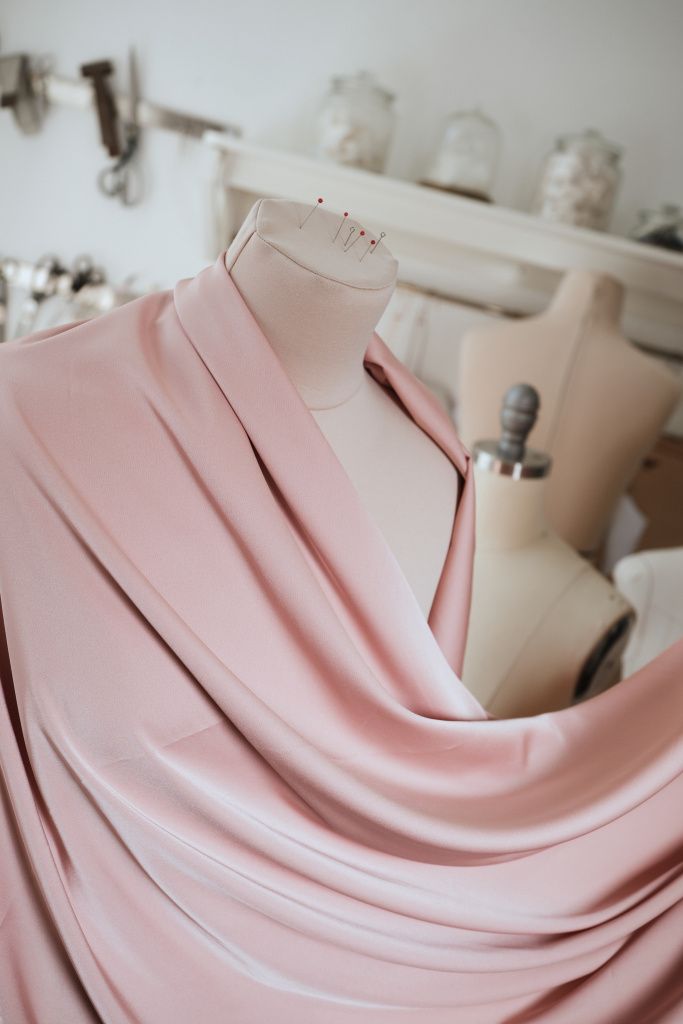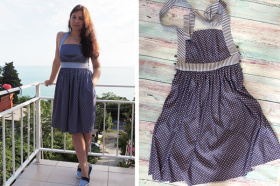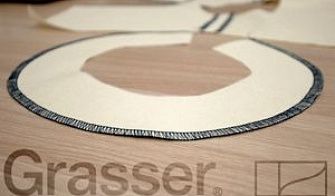How to cut thin and slippery fabrics
Satin, chiffon, crepe de chine and their closest relatives are very capricious at all stages of tailoring. One of the most difficult stages of working with thin slippery fabrics is cutting.
So that the fabric "does not run away":
• before opening the table surface, you can cover it with a light blanket, fleece, flannel, calico. You can use a non-woven fabric. The adhesive interlining should be put with the adhesive side down.
• patchwork mats are also good at preventing the material from slipping. But it is convenient to use them only with a large size of the mat or when cutting small parts.
• You can cover the table with non-slip and dense linoleum or cork sheet. The coating should be of such thickness that it is convenient to stick pins into it to fix the fabric.
• Another way of cutting slippery fabrics is to pre-cut the details of the product from ordinary fabric and make a cut from the main fabric according to them. This method is more expensive in terms of materials and time but using this type of cutting the fabric slides the least.

To prevent the fabric from crumbling, you can treat the sections with hairspray or starch in the form of a spray. This is convenient in the manufacture of oblique beaks, straps, cutting small parts. But first test the fabric and spray / varnish for interaction (varnish / starch can leave streaks and not be washed off).
Before sewing a product from complex, slippery and light fabrics, you need to sew and work out the layout. The layout fabric should be similar in properties to the main fabric.
We do not recommend completely treating the fabric with starch or gelatin. Especially if you plan to sew a product with draperies.
Because:
- while starching the fabric loses its plasticity, and you will not be able to lay a soft drapery.
- after each wash you will have to starch the product again but each time the shape of the drapery may change.
- when processing the fabric this way it is impossible to iron the fabric, which in turn entails landing defects.
While cutting the fabric should lie completely on the table. Otherwise, the details will not be cut out exactly according to the share.
Thin slippery fabrics need to be cut in one layer.
About needles and pins:
Needle punctures remain on most thin fabrics. In some cases, they are "cleaned" after washing or ironing, but more often they still remain. Therefore, for cutting thin slippery fabrics patterns should be in one go with allowances for seams. On products made of thin fabrics the seam width should be 4-5 mm. If you plan to sew the product with a overlocked, double or lock seam the width of the allowance should be equal to two seam widths.
• Pins should be very thin and sharp with a flat ear (without bulky heads).
• While using pins with bulky heads the fabric is pulled and skewed, and the details of the cut will be curved.
• Pins can be inserted only according to allowances.
We recommend applying additional control marks to the parts that will be worn off.
According to the sections of the neck, armholes, we recommend laying stabilizing lines immediately after cutting.
While duplicating thin sheer fabrics, it is convenient to use a special glue spray. You need to glue a piece of fabric with sheer and cut out the already duplicated details. After a while the glue departs itself or is removed from the fabric after washing. But don't forget to test the glue on the sample!
We do not recommend using such glue for gluing a paper pattern. While peeling off the pattern from the part, the fabric can stretch a lot.
Cutting tools
1. If you are cutting on a cutting mat, it is convenient to use a disc knife.
2. It is very convenient to cut with special scissors with micro-teeth for thin and slippery fabrics. These scissors are marked SE.
3. You can't use chalk to outline patterns! It does not wash off natural silk. Soap chalk needs to be tested beforehand. It can leave greasy spots. Especially when interacting with an iron. It is best to use baby soap without additives and dyes. The soap should be well sharpened. With thin fabrics, chalk / soap may simply crumble and the control marks will not be preserved. Therefore, it is better to sweep them with threads according to allowances.
4. You can use special water-soluble or self-disappearing markers while cutting but they must be tested. Such markers may not be washed off. And, even if the marker was washed off during testing, keep in mind that some markers may remain permanently on the fabric after a long time. So do not delay sewing after cutting in a long box.
These were the basic and, in my opinion, the most convenient techniques for cutting thin fabrics. I wish you easy tailoring and plian fabrics!
The author of the article is Alina Khakimova.









